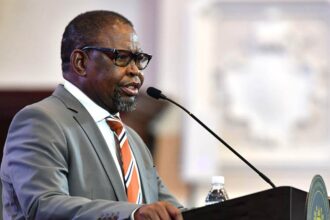South African Airways (SAA) is seeing renewed interest from banks eager to provide financial support as the airline’s fortunes take a turn for the better. Interim CEO John Lamola revealed that the state-owned airline’s improved financial health is drawing attention from lenders keen to back its ambitious expansion strategy.
The airline, which emerged from bankruptcy protection in 2021, reported a profit of R252 million last week, marking its first positive financial performance since 2012. Lamola said in a recent interview in Johannesburg that talks with potential lenders are underway, with the goal of securing funding by March.
Banks Approach SAA Amid Growth Plans
SAA’s growth plan includes more than doubling its current fleet to 43 aircraft over the next five years. This ambitious expansion requires significant capital, especially as the airline is restricted from seeking further government bailouts due to South Africa’s focus on stabilizing national debt.
Lamola noted that the financial turnaround has shifted the dynamic in negotiations. “We are not necessarily running after the banks. They are approaching us,” he said, though he declined to name the interested lenders.
New Routes and Expansion Strategy
The funds raised will support SAA’s plans to expand its route network, including adding nine new destinations to its existing 14 by July. These plans will bolster regional connections across Africa from its Johannesburg hub and position SAA to resume long-haul flights to major international destinations.
By December 2025, the airline aims to launch flights to London, with additional plans to expand routes to the US, Germany, and China. Lamola emphasized that the cash injection would strengthen SAA’s strategic position, enabling faster route expansion and increased competitiveness in global markets.
From Bankruptcy to Profitability
Founded in 1934, SAA’s long reliance on government support came to a head when the airline went bankrupt during the Covid-19 pandemic. Its financial recovery followed a period of business rescue, a form of bankruptcy protection, in 2021. An attempt to sell a 51% stake to private investors was abandoned in March due to disagreements over the structure of the deal.
The airline’s resurgence has become a notable success story, particularly as South Africa scales back bailouts for state-owned enterprises. SAA’s ability to post a profit and attract private funding marks a significant departure from its previous dependency on taxpayer support.
Economic Impact and Future Prospects
Oxford Economics estimates that SAA contributed R9.1 billion to South Africa’s economy in the 2023–24 financial year. If the airline successfully executes its expansion plan, that figure could rise to R32.6 billion by 2030, according to a report released this week.
Lamola is optimistic that the airline’s improved financial position will continue to strengthen its appeal to lenders and boost the broader economy. He sees SAA’s growth as an opportunity to elevate its role in South Africa’s economic development and global connectivity.
Conclusion
The revival of SAA marks a turning point for the embattled national carrier. With banks now approaching the airline for lending opportunities and a clear expansion strategy in place, SAA is poised for a brighter future. The coming months will be critical as it secures the necessary capital to execute its growth plans and re-establish itself as a key player in the global aviation industry.











